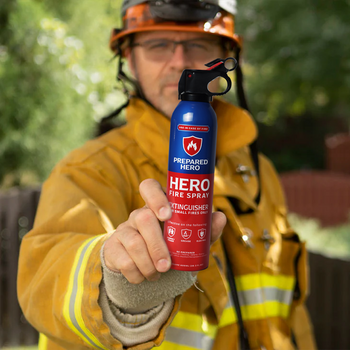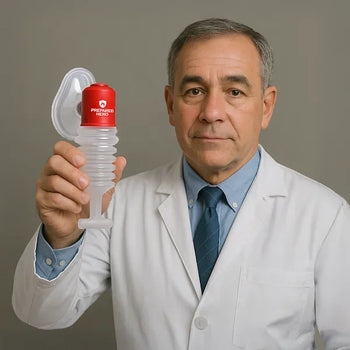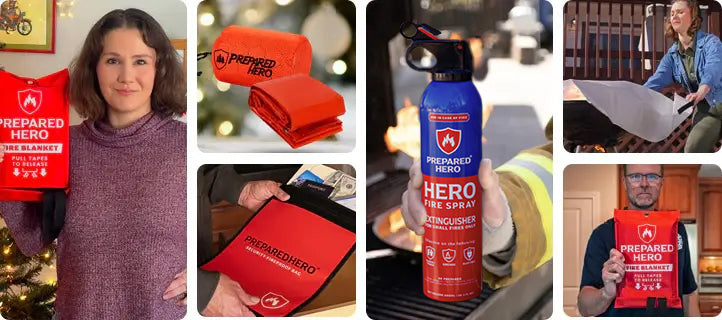Where you put your smoke detectors matters just as much as installing them. Proper placement makes sure they can detect...
Transmission fluid might not be something you think about every day, but it plays a huge role in keeping your car running smoothly. It helps with gear shifts, cools things down, and protects your transmission from damage. But is transmission fluid flammable? Can it put you in danger? How do you stay safe?
In this guide, we’ll break down what transmission fluid does, what happens when things go wrong, and how to handle it safely. Whether you’re a car owner or just curious, it’s good to know what’s under the hood and how to keep it in top shape.
What Is Transmission Fluid?

Transmission fluid does more than most people think. It helps transfer power from your engine to the wheels and keeps the transmission running smoothly. It works like a hydraulic fluid to help your car shift gears. Plus, it helps keep things cool under the hood. In short, your car needs it, no matter the type of transmission.
You should also use the right type and keep it at the proper level. Regular checks and changes can help prevent major damage and expensive repairs down the road. Keeping an eye on your transmission fluid keeps your vehicle in top shape.
What Is Transmission Fluid Made Of?
Transmission fluid is made up of a base oil and a mix of additives. The base oil can be mineral, semi-synthetic, or fully synthetic, depending on your vehicle’s needs. This oil helps keep everything inside the transmission system lubricated and protected.
Additives are blended in to boost performance. They include detergents to keep things clean, friction modifiers for smooth shifting, and antioxidants to prevent breakdown.
God transmission fluid needs to stay thin enough to move easily in cold weather but thick enough to protect parts when it’s hot. If the viscosity is off, the fluid can’t do its job right.
How Flammable Is Transmission Fluid?

Transmission fluid isn’t flammable. It’s combustible. Even though it’s not flammable, it can still ignite if it becomes hot enough or comes into contact with an open flame. It has a flashpoint, which means it can ignite at a certain temperature, and an autoignition point where it burns without a flame. So while it’s not as risky as gasoline, it’s still smart to keep it away from heat sources.
At What Temperature Does Transmission Fluid Start to Burn?
Transmission fluid works best between 175°F and 225°F. Once it goes over 240°F, things start to go downhill. Around this point, the fluid begins to break down, and it can’t protect the transmission like it should. Varnish starts to form, seals get hard, and clutch plates might slip. If the heat keeps rising, seals and clutches can burn out, carbon builds up, and you’re looking at serious transmission damage.
So while transmission fluid doesn’t exactly burst into flames at 240°F, it starts to burn in the sense that it loses its effectiveness and causes problems. Keeping your transmission cool helps avoid that. Remember, regular fluid checks and maintenance are key to avoiding overheating and costly repairs.
Will Transmission Fluid Burn in a Fire?

Yes, transmission fluid can definitely burn in a fire. It's not as easy to ignite as gasoline. But once it gets hot enough, it can catch fire. For instance, if it leaks onto something hot like an exhaust manifold or comes into contact with a spark, it can ignite and add fuel to the flames. This becomes more dangerous if there are other flammable materials nearby.
The fluid itself might not seem dangerous at first, but it can be a fire risk under the right conditions. That’s why it’s important to fix leaks and avoid spills near hot engine parts. In the event of a fire, burning transmission fluid can make things worse, so it’s always best to take care of your car’s systems and keep everything running clean and cool.
It also helps to keep a fire blanket and fire spray nearby, in case things get out of hand. They’re easy to store in your garage or car and can smother small fires fast before they get out of control.
Is Transmission Fluid Hazardous?
Transmission fluid might not be considered highly hazardous, but that doesn’t mean it’s completely harmless. If you’re not careful, it can cause problems for your health, your safety, and the environment. It’s not officially labeled as dangerous under normal use, but things can go wrong if you handle it the wrong way.
For instance, it can irritate or dry out your skin if it gets on it for too long. Plus, it’ll sting once it splashes into your eyes. Breathing in the fumes isn’t great either, especially if you’re working in a space with little airflow. That mist can irritate your nose, throat, and lungs, so always work in a well-ventilated area. Plus, swallowing it can lead to nausea, vomiting, or diarrhea. In rare cases, it can cause aspiration pneumonia, which is way more serious.
Fire is another concern. It’s not as flammable as gasoline, but it can still catch fire if it hits a hot engine or an open flame. And let’s not forget the environment. A spill can harm soil or water, so never pour it down the drain. Take it to a proper disposal center instead.
What Could Cause Transmission Fluid to Burn?

Burned transmission fluid is usually a sign that something’s wrong under the hood. It doesn’t just happen on its own; there are several reasons why the fluid can overheat and break down. Here are the most common reasons why transmission fluid burns:
1. Low Fluid Levels
If your fluid is too low, there’s not enough to keep parts cool and lubricated. This leads to friction and heat, and eventually burns the transmission fluid.
2. Heavy Use
Towing, driving in the mountains, or putting your car under constant strain can cause the transmission to overheat and burn the fluid.
3. Cooling System Problems
A faulty transmission cooler, clogged lines, or low coolant levels can stop the system from managing heat properly.
4. Worn or Damaged Parts
Worn seals or slipping clutches can produce extra heat in the transmission. The heat slowly wears down the fluid’s effectiveness over time.
5. Skipping Maintenance
Old transmission fluid doesn’t work like it should. If you’re not changing it regularly, it breaks down faster under heat and stress.
6. Aggressive Driving
Speeding or driving hard in higher gears adds strain to the transmission. This makes it more likely to overheat and cause the fluid to burn.
7. Leaks
Leaks in the pan or cooler lines slowly drain fluid. This increases the chance of overheating.
Safety Measures for Handling Hot Transmission Fluid

Hot transmission fluid can cause serious burns and injuries if you're not careful. Whether you're doing the work yourself or helping out a pro, here are key safety tips to keep in mind:
1. Let It Cool Down First
Never open or work on the transmission right after driving. Give the engine and transmission enough time to cool off before starting any work.
2. Wear Proper Protective Gear
Wear heat-resistant gloves and goggles to keep your hands and eyes safe from hot fluid splashes or accidental contact. Using reliable gear like fire protection gloves and long, thick sleeves can make a big difference, especially when you're working around hot engines or draining fluid. It’s a simple step that helps prevent serious injuries and gives you more confidence while working on your car.
3. Know Where the Hot Parts Are
Be aware of areas that might still be hot, like the transmission case, cooler lines, and fluid pan. Touching them by accident can lead to burns.
4. Use the Right Tools
Stick with long-handled wrenches and tools made for high-heat jobs. Avoid using your bare hands or cheap tools that might slip or break.
5. Use Reinforced Containers
Use a heat-safe container with a tight lid to catch the draining fluid. It helps keep spills in check and lowers the chance of burns or fire.
6. Avoid Skin Contact
Hot transmission fluid can burn your skin. If it gets on you, rinse the affected area with cool water right away. Learn how to treat second-degree burns at home here. However, you should get medical help if the burn is serious.
7. Work in a Well-Ventilated Area
Transmission fluid fumes can be irritating, especially when hot. Make sure your workspace has good airflow to avoid breathing in too much.
8. Ask for Help If You're Unsure
If something seems off or you're unsure how to proceed, call a qualified mechanic. It's better to be safe than sorry.
What Color Is Overheating Transmission Fluid?

Transmission fluid usually turns dark brown or black when it overheats. That change in color means the fluid has been exposed to too much heat and is likely burned. Transmission fluid is usually bright red, so it’s a red flag if it looks darker and smells bad.
Some fluids may also appear reddish-brown depending on your car’s make and model. If you see dark fluid leaking or notice a burnt smell, it’s best to have your transmission checked. Burnt fluid can’t protect your transmission properly and could lead to serious damage if ignored.
Will Transmission Fluid Catch Fire on an Exhaust Pipe?
Yes, transmission fluid can catch fire if it leaks onto a hot exhaust pipe. It’s not as flammable as gas, but it's still oil-based and combustible. When your engine runs, parts like the exhaust pipe or turbocharger can get extremely hot. If there’s a leak, like from a cracked cooler line or a bad seal, the fluid can drip or spray onto those hot surfaces. It can ignite once it hits something that hot.
This kind of fire usually starts in the engine compartment. You might see smoke or flames, which can damage nearby parts if they’re not handled fast. That’s why it’s so important to fix any transmission fluid leaks right away. Even though transmission is made to handle heat, it becomes a fire hazard when it ends up where it shouldn’t be.
Is Transmission Fluid Explosive?

Transmission fluid isn’t explosive, but it can be harmful. It’s a combustible liquid, which means it can catch fire if it hits something extremely hot and reaches its flash point. Unlike gasoline, it won’t blow up or ignite from just a small spark or bump. It has a high flash point, so it needs a lot of heat to catch fire.
That said, the fluid can expand and leak onto hot parts of the engine if your transmission is overheating or has a leak. That’s when it becomes a fire risk. The good news is that modern transmission fluids often have additives to help resist fire and handle heat better.
So while transmission fluid isn’t explosive or flammable, it still needs to be handled with care, especially if your car starts leaking or overheating. So, keep an eye on your fluid levels and fix leaks quickly to stay safe.
Conclusion
Taking care of your transmission fluid isn’t just about keeping your car running. It’s about avoiding costly repairs and staying safe. Paying attention, from knowing what burnt fluid looks like to handling it properly, goes a long way.
Watch for warning signs, keep up with maintenance, and don’t ignore leaks or smells. The more you understand how this fluid works, the better you can protect your car and your wallet in the long run.
Do you want reliable, easy-to-use, and affordable tools to put out fires before they spread? Check out Prepared Hero’s fire prevention tools here, and get up to 51% off on certain items. Stay prepared, hero!


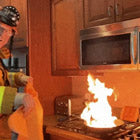 Fire
Fire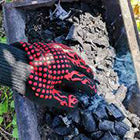 Safety
Safety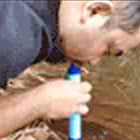 Survival
Survival Protection
Protection New
New
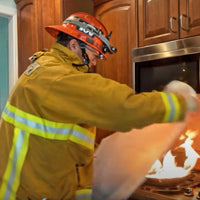 Fire
Fire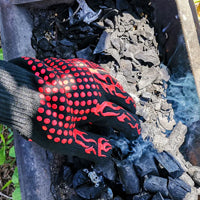 Safety
Safety Survival
Survival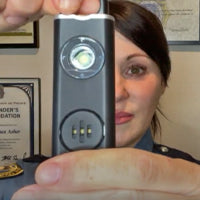 Protection
Protection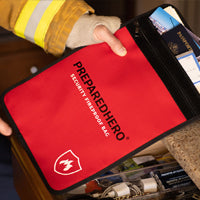 New
New



